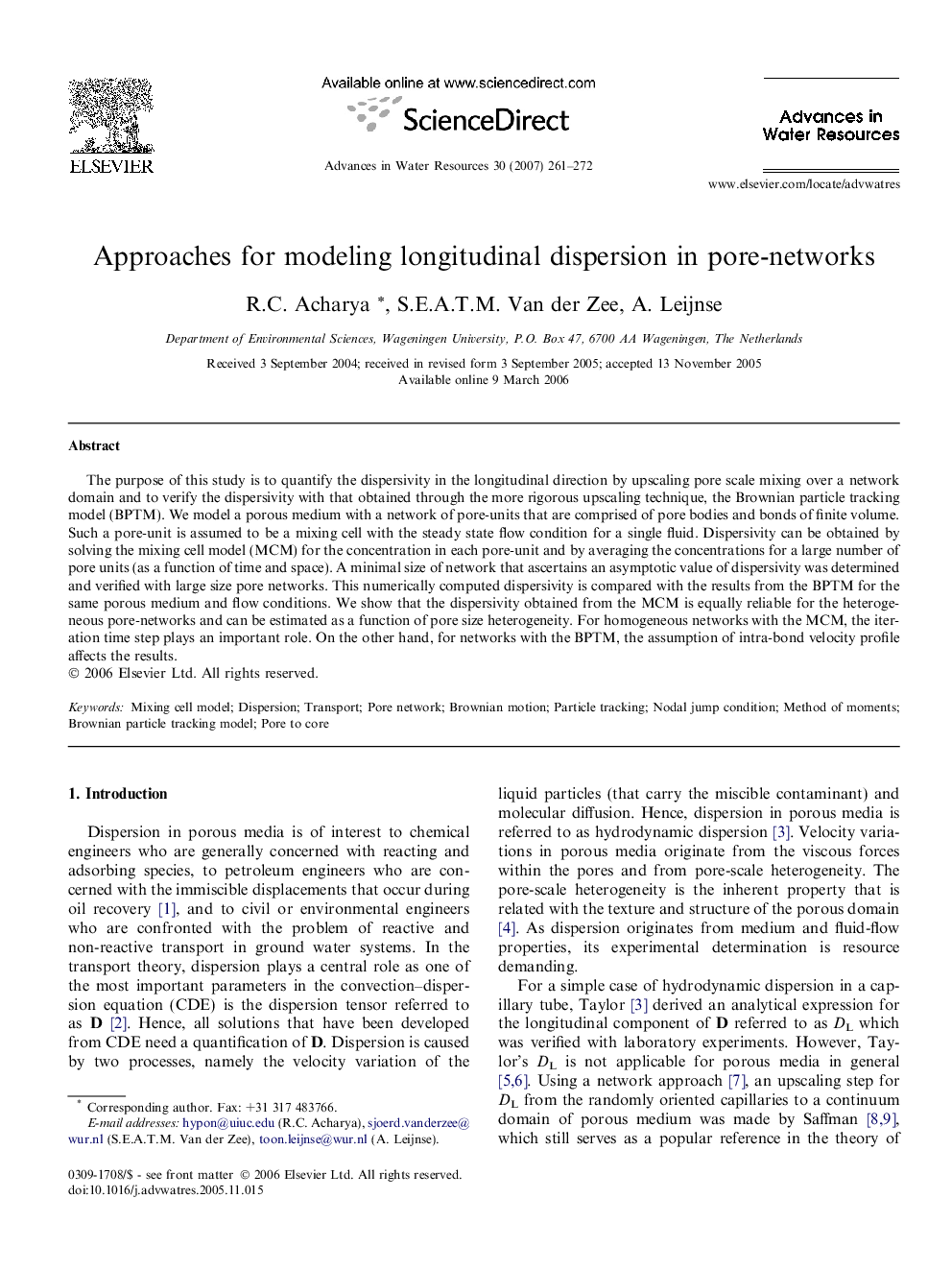| Article ID | Journal | Published Year | Pages | File Type |
|---|---|---|---|---|
| 4526938 | Advances in Water Resources | 2007 | 12 Pages |
The purpose of this study is to quantify the dispersivity in the longitudinal direction by upscaling pore scale mixing over a network domain and to verify the dispersivity with that obtained through the more rigorous upscaling technique, the Brownian particle tracking model (BPTM). We model a porous medium with a network of pore-units that are comprised of pore bodies and bonds of finite volume. Such a pore-unit is assumed to be a mixing cell with the steady state flow condition for a single fluid. Dispersivity can be obtained by solving the mixing cell model (MCM) for the concentration in each pore-unit and by averaging the concentrations for a large number of pore units (as a function of time and space). A minimal size of network that ascertains an asymptotic value of dispersivity was determined and verified with large size pore networks. This numerically computed dispersivity is compared with the results from the BPTM for the same porous medium and flow conditions. We show that the dispersivity obtained from the MCM is equally reliable for the heterogeneous pore-networks and can be estimated as a function of pore size heterogeneity. For homogeneous networks with the MCM, the iteration time step plays an important role. On the other hand, for networks with the BPTM, the assumption of intra-bond velocity profile affects the results.
